Conquering the Greens: How to Rake Artificial Grass
Artificial grass is becoming increasingly sought-after due to its low cost and all-year-round green appearance. But many homeowners aren’t sure about the correct care practices for their artificial lawns. A common concern is how do you do it? In this complete guide, we’ll look at the details of raking artificial turf, including the reason why it’s essential and the most effective tools to use, and step-by-step directions to maintain your lawn at its greatest.
In this article, we’ll discuss in detail how to rake artificial grass. This complete guide takes you into the field of raking artificial grass, providing you with the necessary knowledge and strategies to maintain the appearance of a lush, realistic lawn.
Why Rake Artificial Grass?
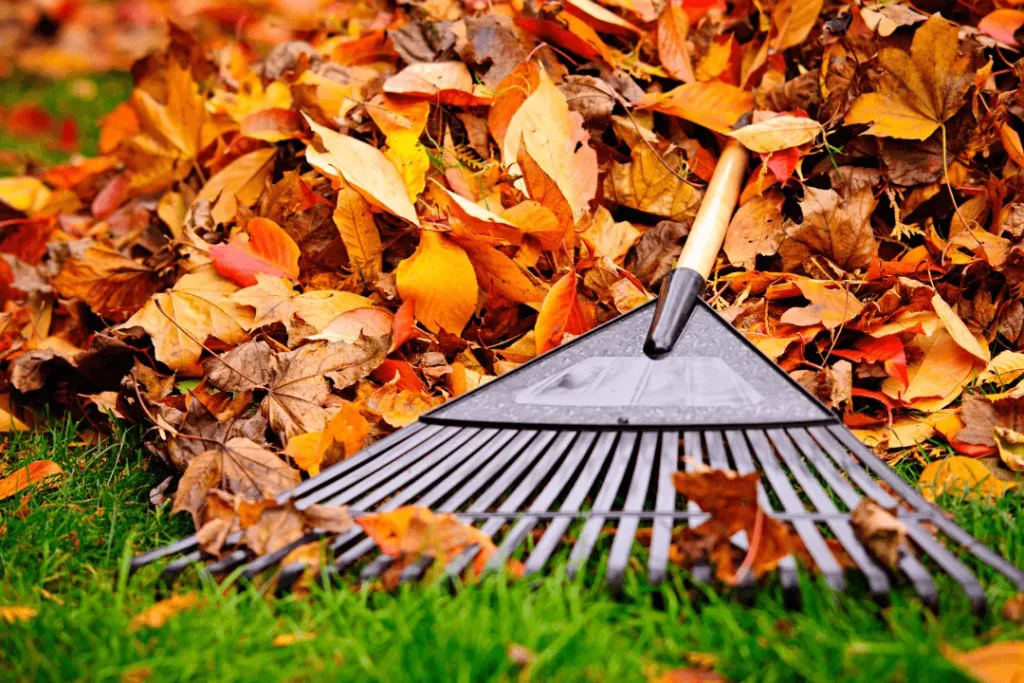
Raking artificial grass has numerous advantages:
For More Interesting and Informative Articles Check out: smartoolbuddy
Before we go into the details of how to mow artificial grass, it’s important to comprehend the reasons why this maintenance job is so important:
- Get rid of leaves and debris
- Stops matting of grass fibers
- Improves drainage
- Improves the overall appearance
- It extends the life span of artificial turf
- Regular raking can help keep the appearance and quality of your synthetic lawn, making sure it appears fresh and natural for many years to come.
The Benefits of Raking Artificial Grass
Raking artificial turf has many advantages that increase the durability and appearance of your synthetic lawn.
Better aesthetics: Regular raking helps keep your artificial grass looking natural and well-maintained.
Increased durability: By preventing matting and evenly distributing the infill Raking can prolong the life of your synthetic turf.
Better drainage: Raking can help to ensure proper drainage by preventing the compaction of fill material.
Reduction of static electrical charge: Maintenance may reduce static buildup in artificial grass fibres.
Prevention of pests : Maintaining your artificial lawn tidy and well-maintained condition will deter insects from establishing a permanent residence on your lawn.
Controlling odors: Raking is a way to get rid of organic matter that can cause unpleasant odors if left to decay.
Choosing the Right Rake for Artificial Grass
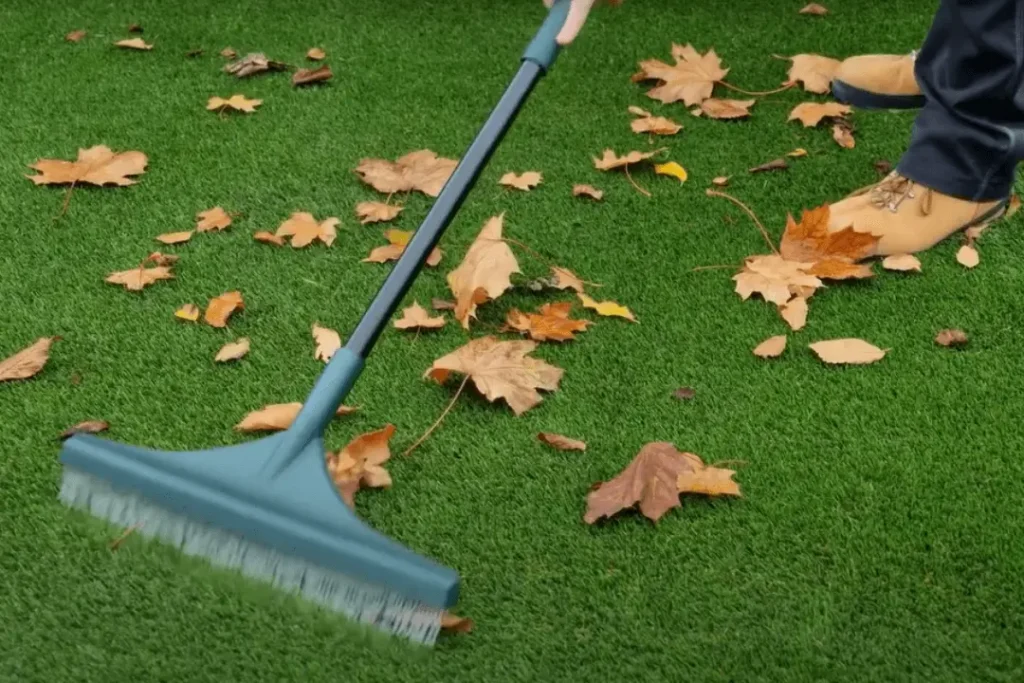
Contrary to natural grass artificial turf requires a more gentle approach. Metal rakes that have sharp tines could nag or cause damage to blades. Here are the top rakes to think about:
- plastic rake: An easy-to-use plastic rake with curved tines makes a secure and efficient option. The curved design makes it easier to remove debris without snagging the fibers.
- Leaf Rake Like an aplastic rake leaf rake with flexible tines is ideal to collect leaves and other light debris.
- Bamboo Rake: Rakes made of bamboo offer an environmentally friendly and natural alternative. The rounded, smooth tines are soft on synthetic grass fibers.
- Artificial Grass Rake The specially-designed rakes for artificial turf typically have soft bristles that effectively eliminate debris while also lifting and fluffing the fibers. They may also come with brushes attached for greater flexibility.
Here’s how to stay clear of them:
- Metal Rakes: Sharp tines can puncture or tear synthetic grass blades.
- Bristle Rakes: Bristles that are too stiff can cause damage to the fibers. Opt for soft bristles with more flexibility.
- Leaf Blowers: Although leaf blowers can be useful in removing big debris, their use on high-powered settings can cause flattening of those artificial grass fibers.
Raking Techniques for Artificial Grass Mastery
Every garden lover questions in his mind how to rake artificial grass properly. Once you’ve found the ideal rake, let’s discover the right methods for keeping the artificial grass you have created:
- The frequency of raking: The frequency of raking is determined by factors such as the environment around it (e.g. and the amount of trees) and the amount of foot circulation. In general, raking once a week in spring and fall and then every two weeks for the rest of the year is enough.
- Soft Touch Gentle touch is crucial for raking synthetic grass. Avoid using too much pressure as it can damage the blades or cause loosening of the infill.
- Direction of Raking: The rake should be directed towards the blades of artificial grass to maximize raising and straightening. This also helps to even out the distribution of infill.
- Section-by-Section: In lieu of taking on the entire lawn in one go, concentrate on smaller sections to keep your lawn in check and not overwhelm yourself.
- Leaf Removal: For stubborn leaves, be careful to lift them using the rake, rather than forcefully pulling them.
- Brushing for extra lift: After raking, make use of the back of the rake or a soft-bristled brush to gently stroke the fibers in an upward direction. This can further enhance your appearance as well as the feel artificial grass.
Beyond Raking: Additional Maintenance Tips for Artificial Grass
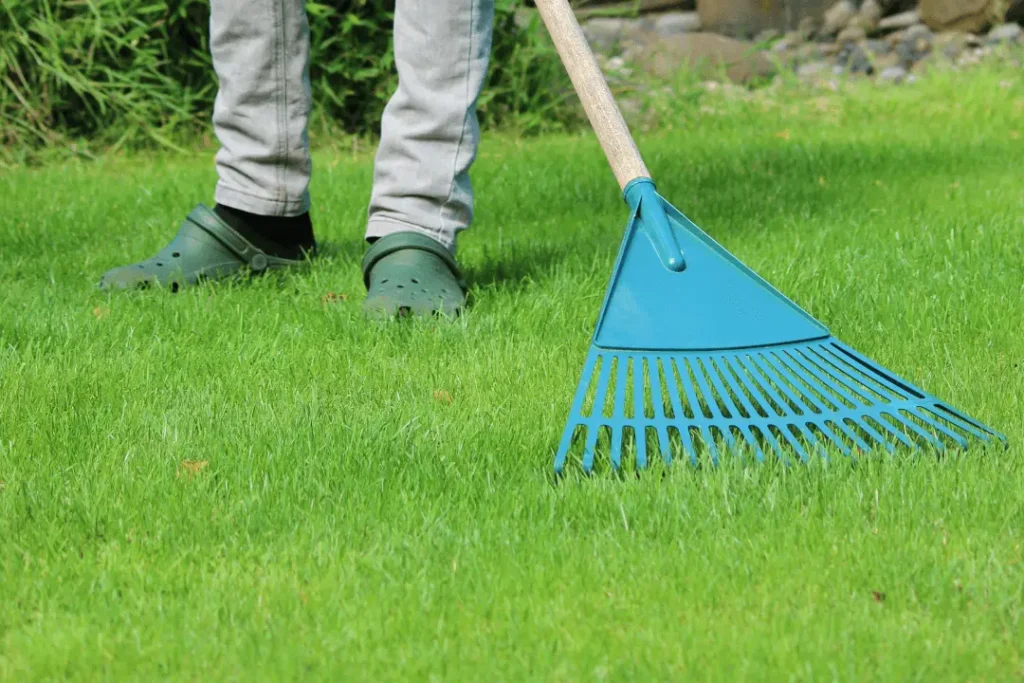
Raking is a crucial aspect of your artificial lawn maintenance plan, however, it’s not all you need to do. Here are a few additional suggestions for keeping your artificial grass looking great and must know about How to Rake Artificial Grass:
- Hose Down Every now and then, hose the artificial lawn in order to get rid of dirt, dust, and small pieces of debris. Avoid excessive pressure, which could cause the grass to fall off. infill.
- Deep Cleaning (Optional): For deeper cleaning, some artificial grass producers offer special cleaning products. Always follow the instructions of the manufacturer for application and dilution.
- maintenance of infills: Check your infill levels every few months, and fill in as necessary with the type of infill that is recommended by your synthetic grass. An infill spreader that is specifically designed for your turf can help to ensure even distribution.
- Pet Waste Removal: Promptly eliminate pet waste to avoid odor and staining of. Make use of enzymatic cleaners specially designed for artificial grass to get rid of any remaining residues.
- Furniture placement: Avoid placing heavy furniture directly on artificial grass for prolonged periods. The weight may cause the fibers to become flat in these areas.
- Sun protection: While artificial turf is typically UV resistant, exposure to prolonged periods of intense sunlight may result in fading of grass over time. You should consider making use of shade sails or shade sails for areas that are exposed to direct sunlight throughout the time of.
- Preventative Measures Minimize the amount of foot traffic on artificial grass during times of extreme heat, since it could melt the fibers based on the kind of artificial grass you choose to use.
Troubleshooting Common Artificial Grass Issues
Even with the best maintenance, there are times when problems may occur with your artificial turf. Here’s how you can address typical issues. It’s important to know that when is the best time to power rake your lawn.
- Flattened Fibers: Regular brushing and raking can aid in preventing flattening. If the flattening persists, it is possible to utilize a power broom equipped with bristles that are soft to re-energize the fibers.
- Infill Loss: Over time, the infill could disappear due to heavy rain or be carried away by powerful winds. Make sure to check the levels of your infill regularly and replenish as necessary.
- Mildew or mold growth: This can occur in areas that have poor drainage or excessive water. Fix drainage problems and let the grass dry completely between irrigations (if appropriate). Apply a fungicide that is specifically designed for artificial turf to combat existing mildew or mold.
Note: Always consult your artificial grass manufacturer’s instructions for specific cleaning and maintenance methods.
Safety Considerations When Raking Artificial Grass
While it is generally an extremely safe task, here are a few security tips to be aware of:
Profiting from the advantages of artificial grass through the right maintenance
If you follow these guidelines, you will be able to ensure that your artificial lawn remains low-maintenance, and an appealing addition to your house. Regular raking, in conjunction with periodic cleaning and maintenance of the infill, can keep your artificial lawn looking lush, green and real for many long times to be.
Bonus Tips: Consider investing in a specially designed rake to be used on artificial turf. They typically come with soft bristles and other features such as brushes, which make maintenance less time-consuming and efficient.
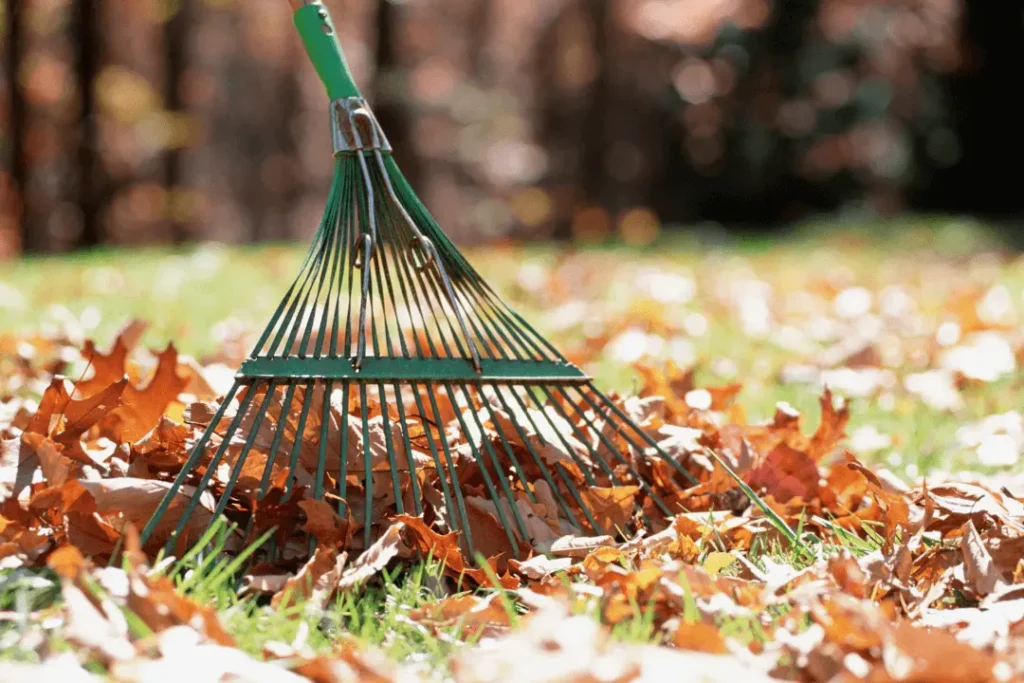
Conclusion: Keeping Your Artificial Grass Looking its Best
At this point, you should be able to comprehend how to properly rake artificial turf. Keep in mind that the secret to keeping a beautiful artificial lawn is to maintain it with regular, gentle care with the appropriate tools and techniques.
Whether you’re using the top artificial grass rake or just a basic plastic leaf rake, regular maintenance will keep your lawn looking beautiful and natural for many years to come. If you incorporate the use of rakes into your routine lawn maintenance, you’ll reap the advantages of artificial grass, without the hassles of regular lawn care.
Frequently Asked Questions about How to Rake Artificial Grass
Q. Do I need a special rake for artificial grass?
Although not a necessity an specialized rake made to be used on artificial grass has many advantages. They typically include:
- Softer Bristles Gentler on synthetic grass fibers, they reduce the chance of harm.
- Curved Tees: Effectively lift debris without tangling the blades.
- Brush Attachment (Optional): Provides an additional tool to brush fibers in a straight line and restore their appearance.
You can be successful with the standard rake so long as you select the correct type on how to rake artificial grass.
- plastic rake: It is light and soft on fibers. Opt for one with curly tines.
- Leaf Rake: Akin to a plastic rake but with flexible tines that are ideal to gather leaves.
- Bamboo Rake: A natural and sustainable option that has smooth round tines that don’t cause damage to the bamboo fibers.
Q. How do you rake artificial grass?
Artificial grass can be cleaned by brushing or raking it. It’s not required, but it can greatly improve its appearance and function. Here’s how you can get it done effectively:
- Following Raking After you’ve completed the raking to get rid of debris, then use the back of your rake, or a soft brush made to be used on artificial turf.
- Direction of Brushing: Brush the fibers in the same direction they normally lay, generally in the direction of grain. This allows them to be lifted up and give them a more realistic appearance.
- Gentle Strokes Make gentle strokes to prevent damaging the fibers, or even removing the infill.
Regular brushing of your artificial grass keeps it looking fresh and keeps the fibers from settling in over time.
Q. What kind of rake do you use for grass?
For lawns with natural grass, using a different kind of rake is suggested. These are two of the most popular choices:
- Leaf Rake It is ideal for collecting leaves or other light debris. It has a large head that has flexible tines.
- Bow Rake: Ideal for spreading compost, mulch or gravel. The curved head facilitates ease of pushing and maneuvering loose materials.
Q. How to remove leaves and debris from artificial grass?
Destroying leaves and dirt from synthetic grass is an easy procedure:
- Choose the Best Rake: Select a rake with soft bristles or round tines to prevent damaging fibers (as stated earlier).
- Raking technique: Use a gentle stroke and rake in directions of blades of artificial grass. You can work in sections for greater control.
- Stiff Leaves: For leaves that are stuck, gently raise them with a rake instead of grabbing them.
- Time: The frequency of raking will depend on the conditions in which you are. In general, every week in spring and autumn as well as every two weeks during the rest of the year, is enough.
With these steps you can efficiently remove debris and leaves while preserving the quality of the artificial grass.
Q. How often should you rake artificial grass?
How often you rake artificial grass is contingent on many variables:
- Surrounding Environment If you’ve got lots of trees in the area that shed leaf litter, you might require raking more frequently (perhaps once a week during the time of peak shedding).
- Foot Traffic A lot of foot traffic can reduce the thickness of fibers and make them more prone to accumulating debris. If you live in areas that are heavily populated, consider doing more raking.
- Season The seasons of fall and the spring when debris and leaves are more abundant and a lot of debris is accumulated, you might need to rake more frequently (weekly or biweekly) as opposed to winter or summer.
But a good general rule is to rake once per week in spring and fall and then every two weeks through the remainder of all year. By keeping track of the grass you have installed and altering the frequency based on your requirements you can make sure it is kept in pristine condition and at its best.
Also Read: THE ULTIMATE GUIDE TO CHOOSING THE BEST SHOVEL FOR DIGGING

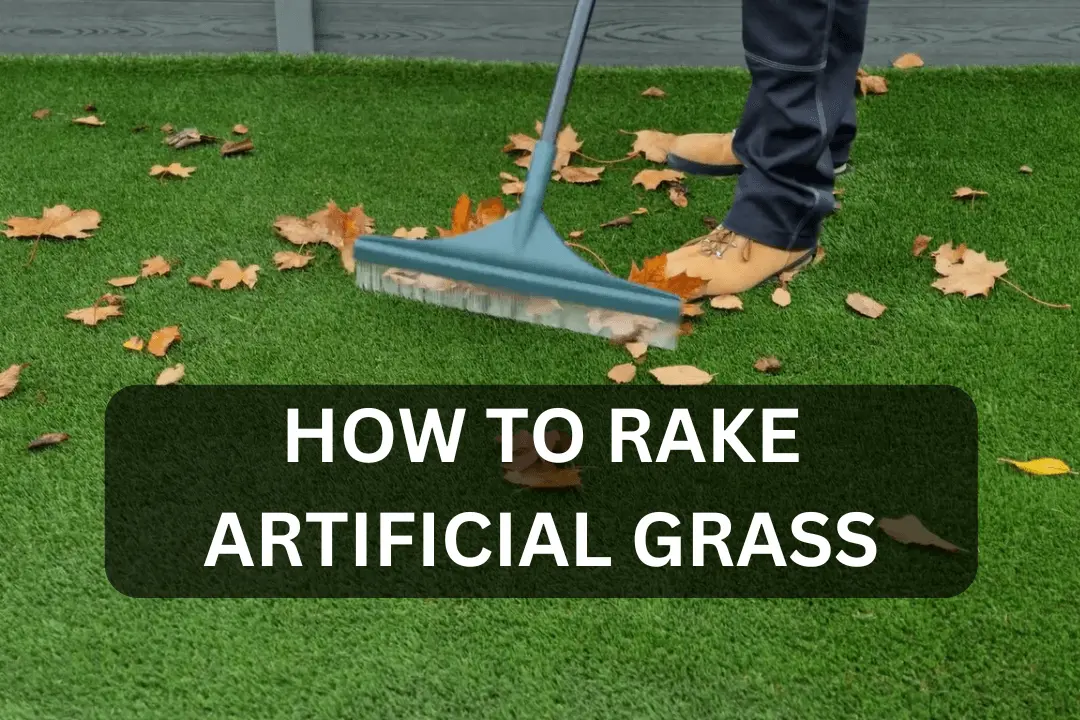
Related Blogs
The Top 10 Best Litter Box for Multiple Cats
5 Best Dry Cat Food for Indoor Cats 2024
Affordable Bluetooth Projector for Gaming: The Best in 2024
The Best Soundbar for Music and Movies for Home Threaters
Stay Powered Up: The Best Portable Charger for iPhone 15 in 2024
The iPhone 15 Pro Max New Features: Comprehensive Features
Liquid Screen Protector vs Tempered Glass: Which is better in 2024
What is a Monkey Wrench: Complete Details
Guide to Cleaning Your Gatorade Bottle The Proper Way
How To Sharpen Garden Hoe: Real Guide to the problem
How to Use a Tack Hammer Nail it Every Time
Easy Ways on How to Clean Garden Tools at Home
Changing a Garden Cart Tire: Expert Hacks That Will Save You from $200+ in Repairs
How to Whisk Eggs: Easy Manual Techniques
Garden Fork Vs Pitchfork: Deciding Which Tool Will Meet Your Garden Needs
How Deep To Plant Daffodil Bulbs? A Simple Guide
How to Pick the Best Shovel for Digging in 2024
The best time to power rake your lawn
Why Your Kitchen Isn’t Complete Without an Acacia Cutting Board
How to Replace Trimmer Line in Bump Feed: Step-by-Step Guide
Perfect Make Matcha Without Whisk: The Ultimate Guide
10 Ways to Remove Snow from Driveway Without a Shovel: Innovative Snow Removal
The Ultimate Guide: How Many Wheelbarrows of Sand Per Bag of Cement
Don’t Make This Silly Mistake with Your 5 Uses of Garden Fork
Is a Spade and a Shovel the Same? Discover the Differences Here
Transform Your Garden with Stunning Garden Stake Ideas You’ll Love
The Best Home Gym Equipment you can get in 2024
The Best Home Gym Setups for Small Spaces
Shoot Like a Pro: The Best iPhone Filmmaking Kit
Are Bone Conduction Headphones Safe?
Revolutionize Your Visual Experience: Best Samsung CF39 Series in 2024